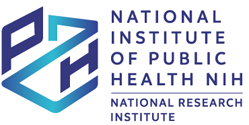Determination of vitamin c in raw fruit and vegetable homogenates: dietary exposure and health effects of excess intake in adults and children
1
Department of Pure and Industrial Chemistry, Nnamdi Azikiwe University, PMB 5025, Awka, Nigeria
Publication date: 2024-04-18
Rocz Panstw Zakl Hig 2024;75(1):21-33
KEYWORDS
ABSTRACT
Objective: The aim of the study was to determine Vitamin C content in some fruits and vegetables (FAV) including apple, banana, orange, pineapple, watermelon, carrot and cucumber, sold in the local markets in Awka, Anambra State, Nigeria as well as Vitamin C content in two-component and three-component homogenates FAV. The work was also designed to investigate the dietary exposure and health effects of excess vitamin C intake in adults and children. Material and Methods: Vitamin C as total ascorbic acid (AA) after reduction of dehydroascorbic acid was analyzed using both titrimetric and spectrophotometric methods. The titrimetric method involved iodometric back-titration while the spectrophotometric method was done at an absorbance of 530 nm. The dietary exposure was evaluated as the total FAV intake multiplied by chemical concentration in the FAV whereas the health effect of excess vitamin C intake was conducted using the hazard quotient (HQ). Results: The results revealed that Vitamin C for single fruits ranged from 11.76 - 41.17 mg/L for spectroscopic method and 16.9 – 31.84 mg/L for titrimetric method. Fruit homogenates showed Vitamin C concentrations of 14.70 – 220.58 mg/L and 17.23 – 209.09 mg/L for two-components homogenates: 29.41-132.35 mg/L and 31.05–113.10 mg/L for tri-components homogenates for spectrophotometric and titrimetric methods respectively. The results of dietary exposure and the health effects of excess vitamin C intake showed that children are more susceptible to health issues than adults in illnesses such as nausea, gastrointestinal pains, increased kidney stones and hyperactivity. Conclusions: There is therefore the need for a national recommended dietary allowance for total ascorbic acid (AA) in FAV homogenates from a stakeholder point of view in Nigeria.
Share
RELATED ARTICLE
We process personal data collected when visiting the website. The function of obtaining information about users and their behavior is carried out by voluntarily entered information in forms and saving cookies in end devices. Data, including cookies, are used to provide services, improve the user experience and to analyze the traffic in accordance with the Privacy policy. Data are also collected and processed by Google Analytics tool (more).
You can change cookies settings in your browser. Restricted use of cookies in the browser configuration may affect some functionalities of the website.
You can change cookies settings in your browser. Restricted use of cookies in the browser configuration may affect some functionalities of the website.



